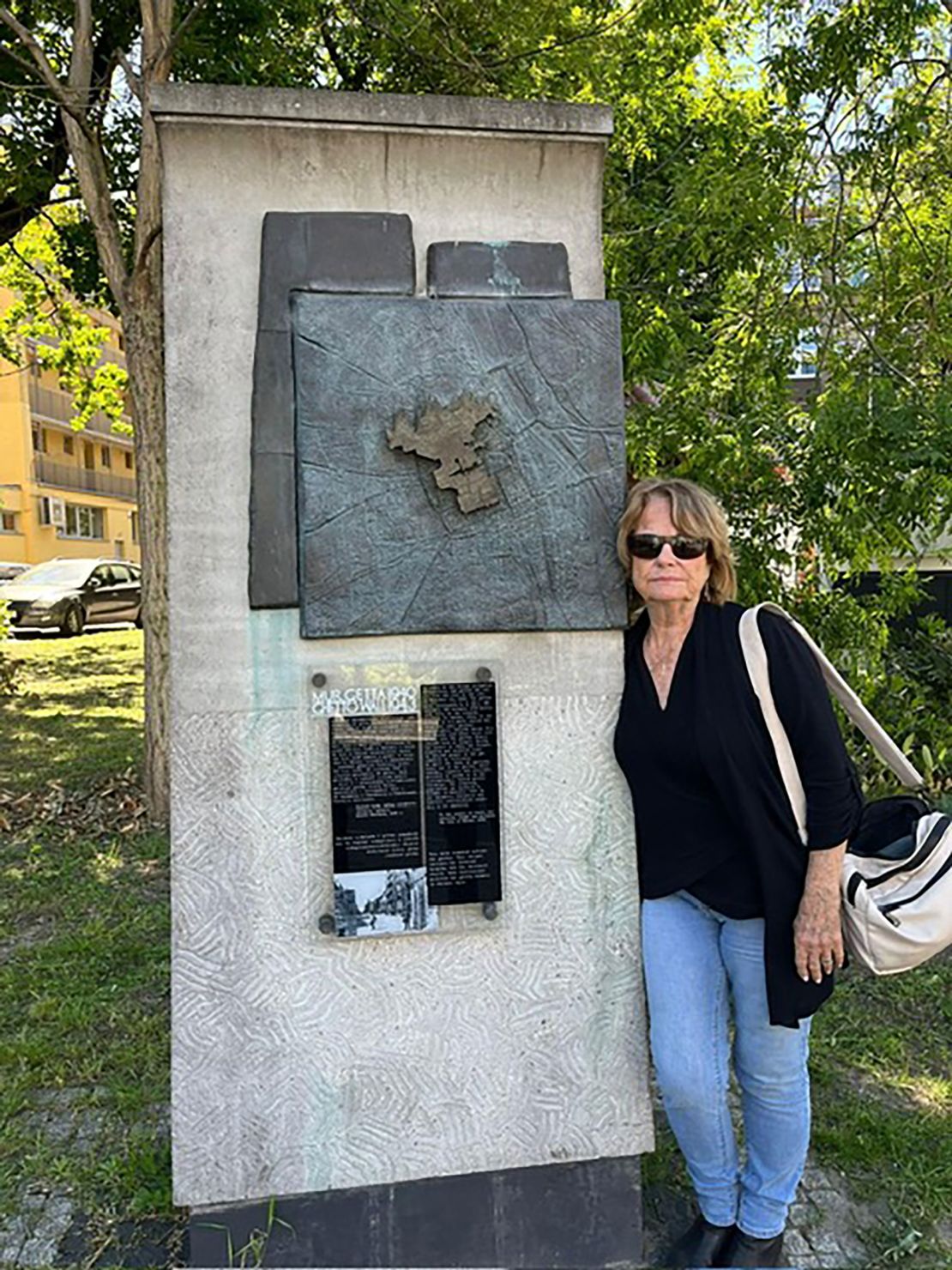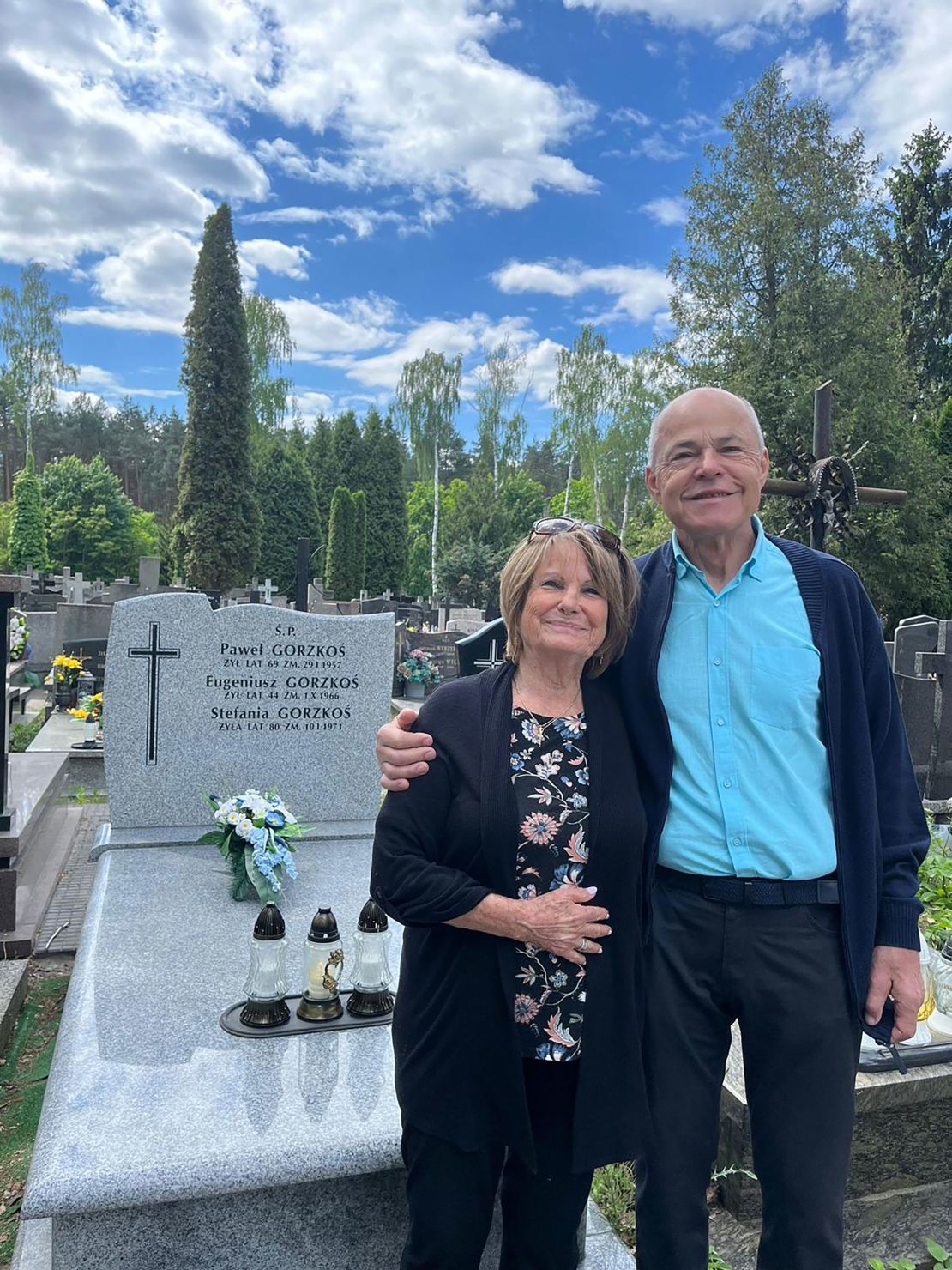CNN
—
When Elana Milman published an autobiography last year about her lifelong quest to find her birth parents, she had accepted she would never know the identity of her father.
But thanks to a DNA test and some serious “genealogical detective work,” Milman, a 77-year-old retired teacher born in a displaced persons camp in Bergen-Belsen, has just returned from Poland, where she had an emotional meeting with the brother she didn’t know she had until earlier this year.
Growing up on a kibbutz in northern Israel, Milman had no idea her mother and father were not her birth parents until she was six, when she recalls a friend shared the “very big secret” he had heard.
“I remember this feeling like yesterday, like a kind of stab in my tummy,” Milman, a retired teacher, told CNN on a video call.
When confronted, her parents admitted that they had not brought her into the world but said they loved her and were raising her to have a “wonderful life.”
Over the years, whenever she tried to discuss it, she was told: “When you grow up, you’ll know.”
It was only in her 30s that Milman finally discovered her birth certificate, which – after some meticulous research – led her to her birth mother in Canada.
The birth certificate showed she was born Helena Lewinska to a Polish-Jewish woman called Franziska Lewinska in 1947 at the Bergen-Belsen displaced persons camp, close to the site of the former Nazi concentration camp of the same name.
However, in 1948 she arrived in what was then Palestine – just months before Israel’s independence – as part of a group of unaccompanied children from war-torn Europe. She was adopted by a childless couple, Eliezer and Hulda Rosenfeld, from Kibbutz Merhavia, near Haifa.
Against the odds, Milman eventually tracked down her biological mother, who had married and changed her name, in Canada and even spent a year there with her family. The pair grew close over several years and although her mother, known as Franka, shared much about her wartime past before she died in the 1980s – how she survived the Holocaust by escaping from the Warsaw Ghetto and living on the other side of the city under a false identity, and how her parents and siblings perished at the Nazis’ Treblinka extermination camp – she refused to divulge the identity of Milman’s father.
He was listed as Eugeniusz Lewinski on Milman’s birth certificate, but her research hit a brick wall as she found no evidence of anyone by that name.
“Every time I quizzed my mother – like, what happened to her during the war and who was my father – she gave me different stories,” she told CNN. “When I bugged her too much, she said ‘the only thing I can tell you is that he was a very good singer and dancer – and very handsome.’”
Last year, Milman – who has four children and 10 grandchildren – published an autobiography aptly entitled “When you grow up, you’ll know.” In an interview with an Israeli magazine at that time, she said she had come to terms with never knowing who her father was.
Little did she know that Gilad Japhet, founder and chief executive of genealogy platform MyHeritage, would read the article and pass it to his research team, asking “can we help?”
With Milman’s consent, they embarked on “genealogical detective work,” according to Roi Mandel, MyHeritage’s director of research.
There were few clues to go on and it seemed as if Lewinska had, for whatever reason, given the “father” on the birth certificate the male version of her surname to create the impression they had been married.
But then Milman took a DNA test, which proved crucial. It showed she was 50% Ashkenazi Jewish and 50% Eastern European and revealed a match with a Polish woman living in France. They shared 2.3% of their DNA – meaning they had a set of great-grandparents in common.
The Polish woman could not explain the connection but she had a small family tree, which MyHeritage built upon using its extensive database of historical documents and with the help of a professional researcher who trawled the archives in Poland.
“Luckily for us, the DNA test and the small match found for Elana with a Polish user was the little clue we needed,” Mandel told CNN in an email.
“The research took six months, as part of which we mapped the family, mapping eight pairs of great-grandparents, and delved into each branch and its male descendants. We marked the potential candidates, who were in the right place, at the right time and of the right age.”
That time, the researchers estimated, was somewhere between April 24 and 28 in 1946, leaving them with six prime suspects.
Fortunately, they struck lucky first time, after deciding to focus on a man who shared a first name with the birth certificate entry: Eugeniusz Gorzkoś.
Mandel’s team subsequently found and reached out to Gorzkoś’s son, Juliusz, a 72-year-old retired veterinarian in northern Poland.
Shocked but intrigued, he agreed to a DNA test, which proved that he and Milman were half-siblings.

The pair first “met” at a virtual reunion facilitated by MyHeritage in March. Speaking through an interpreter, Milman told her brother that learning her identity had been the “project of my life.”
Gorzkoś told his sister their father was a virtuoso violinist and a singer – which prompted Milman to burst into tears, saying: “He was a violinist? Oh dear God, I played violin as well. Ten years! I was playing in an orchestra and also a singer.”
Last month, she traveled to Poland to meet Gorzkoś, accompanied by her adult granddaughter. They were greeted at the airport with flowers and warm hugs by her brother and one of his sons. “I immediately felt blood is not water,” she told CNN.
The two women spent several days at Gorzkoś’ home in the village of Blizno, northwest of the capital, Warsaw, where his English-speaking son acted as a go-between.
“My family said we resemble each other,” said Milman, adding that she had also met Gorzkoś sister Ewa, another half-sibling to Milman, with whom she had not previously spoken.

“They prepared an album for me, of my father with his family,” she said, adding that she noticed an “unbelievable” physical similarity with some of her own family.
Milman said she was “so happy” to have connected with her brother and family, saying it was “way beyond” anything she had hoped for.
She also traveled to Warsaw with her granddaughter and one of her brother’s sons. While there, they found themselves at a point that gave Milman “shivers.”
On one side of the street was a memorial indicating a wall that separated the Jewish ghetto from the rest of the city. Just steps away from this was a sign commemorating the resistance fighters who were shot on the spot by German forces as they quelled the 1944 Warsaw Uprising led by the Polish underground, known as the Armia Krajowa (Home Army).
She said it was a “defining moment” of the trip, when she realized that she was standing in a place where her parents had both been pitted against the Nazis 80 years ago.
“I am a descendant of a Polish-Jewish mother – a survivor of the Warsaw Ghetto – and a Polish-Catholic father, a former Armia Krajowa fighter who was injured and captured on the first day of the Polish uprising on August 1, 1944.”
She added: “I finally closed the circle of my belonging – both paternal and maternal.”
Gorzkoś told CNN that “nothing in my deepest dreams” could have prepared him for meeting another sister.
“I was thinking that I was already reaching the end of my days,” he said in a video call with CNN. But the connection left him feeling “I was born a few months ago.”
Gorzkoś said their father died in 1966 but he “barely remembers” him, as Eugeniusz and his mother separated when he was very young. “It didn’t even occur to me that my family was incomplete,” he said. “It’s quite amazing.”

Of Milman’s recent visit, he said: “After a few hours it didn’t feel like we didn’t know each other – we felt almost as if we had known each other for a long time.”
Gorzkoś told CNN that Eugeniusz was too young to be called up at the outbreak of war, but joined the resistance in 1940. Three years later he was arrested by the Germans for distributing resistance leaflets and imprisoned in Warsaw, where he was held for several months.
According to his son, he was injured in the Warsaw Uprising in 1944, after which he was sent to a prisoner-of-war camp in Germany, where he was upon liberation.
This may be where he met Lewinska – unless their paths had already crossed in Warsaw during the war. The extent of their relationship remains a mystery and, though she can speculate, Milman accepts that she will never know the truth.
“Right now that doesn’t matter to me in comparison with when I wrote the book and thought this was the most important thing. Not any more,” she said. Her autobiography will soon be available on Amazon in English, entitled “The Secrets My Mother Kept.”
Mandel said MyHeritage had felt “a duty” to help Milman. Many hours of detailed research and some “healthy intuition” went into the project, he stressed, but modern technology was key.

“When the DNA test confirmed the findings and proved beyond any doubt that we had found a half-brother to Elena and the identity of her father, we felt great pride and immense excitement. The circle for Elena is closed,” he said.
These factors explain why, in part, long-buried family secrets are only emerging now.
“Although 80 years have passed since the war, we are witnessing an increase in the amount of stories related to it and new discoveries, due to the availability of digital platforms such as MyHeritage which make the archives digitally accessible,” said Mandel.
“Also, as in this case, DNA tests allow a research hypothesis to be scientifically and definitively confirmed, and sometimes to be the basis for historical research and the starting point. Technology allows us to fill in the puzzle with the missing pieces.”













